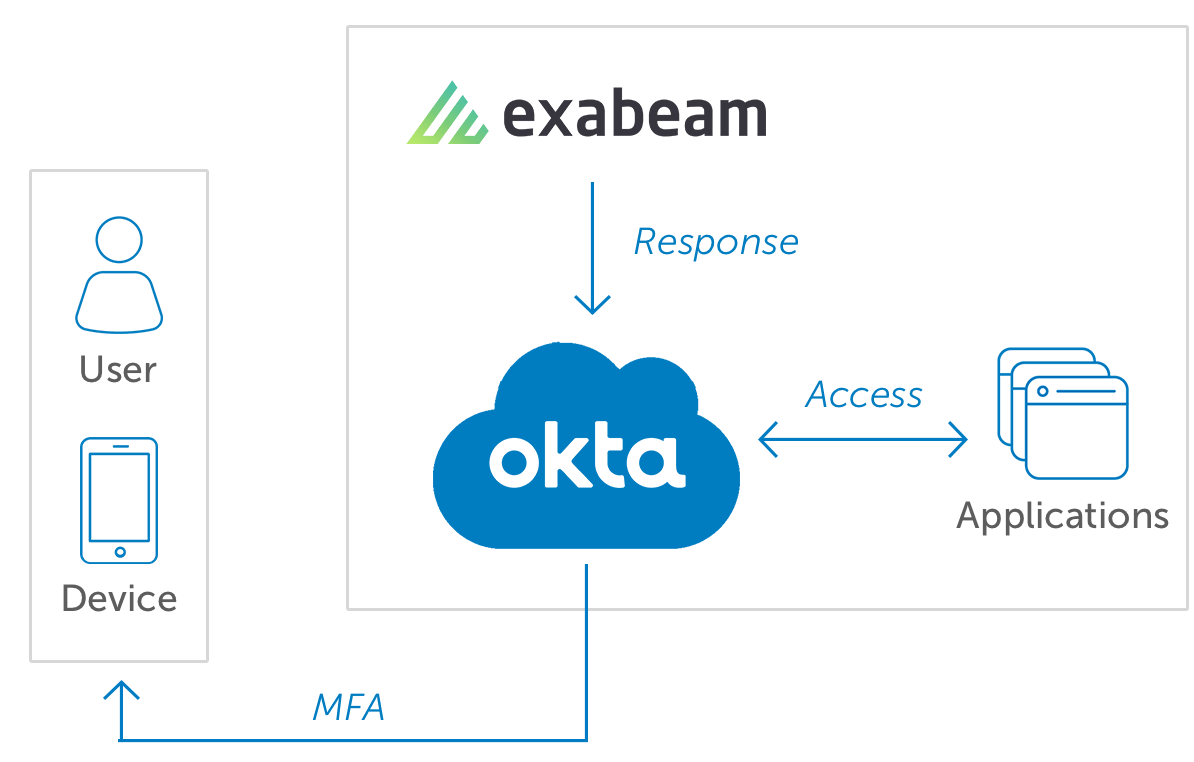- Home
- Automation
- Exabeam
Integration detail
Exabeam
Overview
The Exabeam Security Intelligence Platform provides organizations of all sizes with end-to-end detection, analytics, and response capabilities from a single security management and operations platform. Get the SIEM you always wanted.
The Challenge
- Credential-based attacks are the leading cause of successful data breaches
- SecOps team must continually monitor an increasing barrage of security alerts for anomalous behavior
- Triaging identity and security incidents via manual detection, prioritization, and remediation is highly manual and risky for SecOps
The Solution
- Okta provides rich identity data to contextualize user behavior
- Exabeam combines user and system data into a unified data lake for processing
- State of the art security analytics help SecOps quickly spot anomalies and prioritize user-based threats
- Remediation begins instantly, including team alerts and automated response policies
- End-to-end detection, collection, and response are all coordinated in a single integration

See clearly across your environment
The Okta + Exabeam integration gives you deep insights into user behavior, with Okta’s contextual user data and system information all compiled into a single unified data lake for Exabeam to process. This detailed baseline of normal activity makes subtle anomalies and potential threats easier to detect.
Comprehensive, identity-driven security intelligence
- Best-of-breed IAM integrated with next-generation SIEM for robust security
- Contextual identity data joins security data to provide unprecedented visibility into baseline user behavior
- Advanced analytics and threat detection tools quickly identify and prioritize anomalous, risky behavior
- Automated incident response alerts teams and authorizes Okta to remediate with step-up authentication or account suspension
Documentation
Here is a section all about documentation, integration, and implementation.